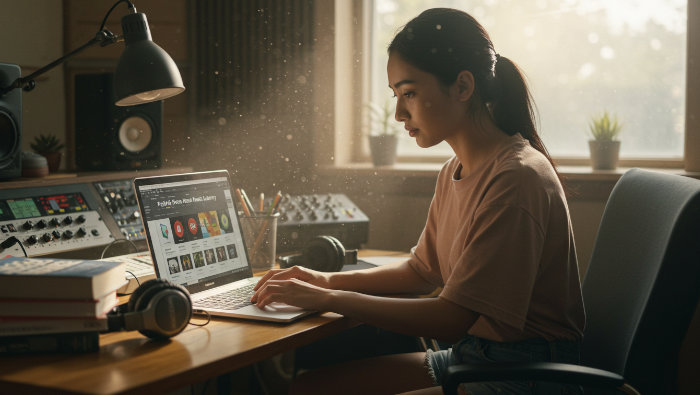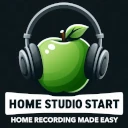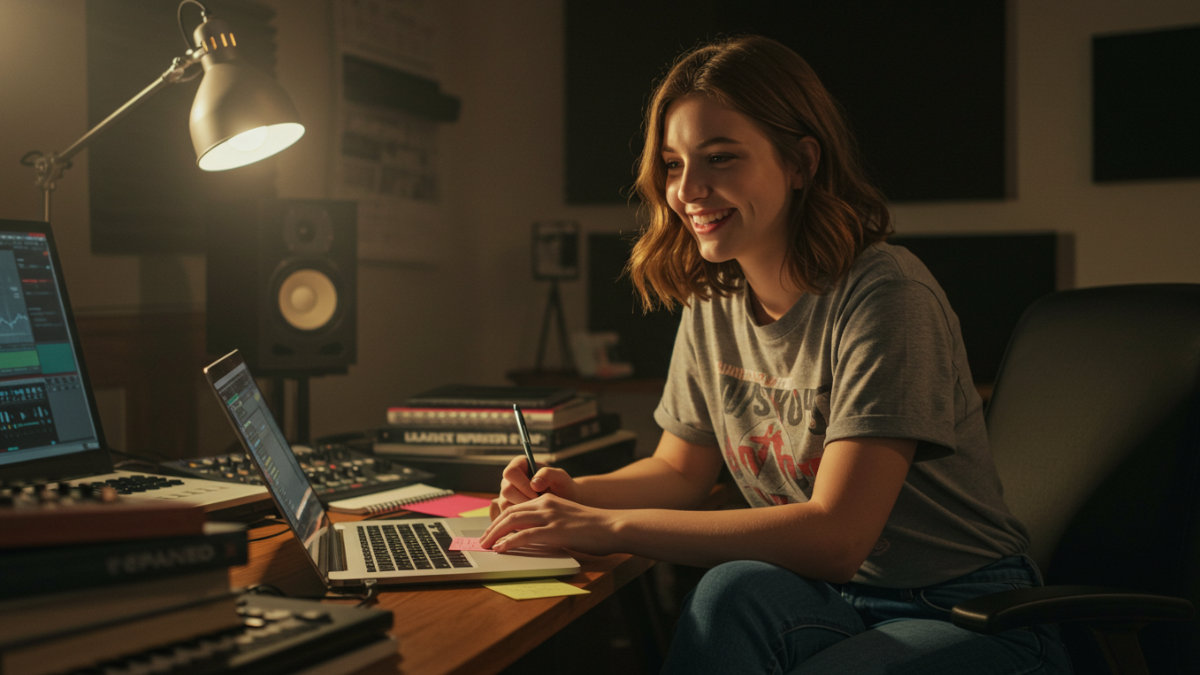HSS Podcast - Free to Use, Not Confused: Must-Know Royalty-Free Music Terms
HSS Staff
Welcome to the exciting world of Royalty Free Music, where creativity, convenience, and commerce meet! If you’ve ever found yourself lost in a maze of confusing terms and wondered how they affect you as a musician, content creator, or producer, you’re in the right place. Understanding the nitty-gritty of Royalty Free Music can be your secret weapon, unlocking endless possibilities and ensuring you make the best decisions for your projects and wallet. Get ready to dive deep into essential terminologies that will transform your understanding and usage of music in professional settings. By the end of this journey, you’ll wield the knowledge not just to participate in, but to thrive in the landscape of Royalty Free Music. Ready to unravel the mysteries? Let’s embark on this melodious adventure!
1. Understanding the Basics: What is Royalty Free Music?
Diving into the world of music production, you’ll frequently encounter various terminologies, one of which is royalty free music. Understanding this term is crucial, especially if you’re creating content that involves music licensing. Essentially, royalty free music refers to a type of music licensing that allows you to use a piece of music without the need to pay royalties or licensing fees for each use.
What Does Royalty Free Mean?
The term “royalty free” can be somewhat misleading. It doesn’t mean the music is free of cost. Instead, you typically pay a one-time fee to purchase the rights to use the music in perpetuity. For instance, when you buy a track from a royalty free music library, you can use it in your project without worrying about additional payments each time it’s played or downloaded.
Practical Tips for Using Royalty Free Music
Firstly, always ensure to read the licensing agreement carefully. Each provider may have different terms. For example, some agreements might restrict the use of music in certain types of projects, such as commercial advertising. Secondly, to make the most out of royalty free music, consider using platforms like AudioJungle or Pond5. These platforms offer extensive libraries where you can preview tracks before purchasing.
Real-Life Example
Consider a YouTuber looking to add background music to their videos. By opting for royalty free music, they can enhance their content without worrying about copyright strikes or ongoing fees. This approach not only saves money but also simplifies the process of legally incorporating music into their projects. Understanding and utilizing royalty free music can be a game-changer for creators looking to stay compliant while enjoying creative freedom.
2. Rights and Licenses: A Deep Dive into Music Licensing Terms
Understanding rights and licenses is crucial when diving into the world of royalty-free music. Navigating these terms can feel like learning a new language, but they’re foundational to making informed decisions about using music legally and effectively.
Exclusive vs. Non-Exclusive Licenses
First, let’s break down the two primary types of licenses: exclusive and non-exclusive. An exclusive license grants you sole rights to use the music in specified ways, meaning no one else can use the same track for those purposes. For instance, if you’re producing a film and want a unique soundtrack, an exclusive license ensures your film is the only one with that particular music.
On the other hand, a non-exclusive license allows multiple users to access the same track. This is more common in royalty-free music because it lowers costs and increases accessibility. For example, a popular vlog might use a non-exclusive track that also appears in a podcast. Both parties legally use the same music, but each pays a fraction of what an exclusive license would cost.
Synchronization Rights
Synchronization (sync) rights are particularly relevant in royalty-free music, allowing you to match audio with visual media. If you’re creating a YouTube video or an advertisement, sync rights ensure you can use the music to enhance your visuals legally. Consider the famous case of Apple’s iPod commercials, which employed catchy tunes that matched the vibrant visuals. This seamless integration helped boost both the product and the artists featured.
Practical Tips for Navigating Licenses
When selecting music, always read the licensing agreement thoroughly. Some licenses might have limitations on geographical usage or duration. A good tip is to list your project needs first, such as global reach or unlimited time usage, and then match these with the license terms. Websites like Artlist or Epidemic Sound provide clear, straightforward licensing options that cater to various project types, making them excellent resources for finding the right music for your needs.
3. Key Terms in Royalty Free Music Agreements
Understanding the intricate world of royalty free music agreements is crucial, especially if you’re diving into the music industry or simply exploring new ways to use music for your projects. Let’s break down some essential terms you must know about royalty free music and how they relate to the broader topic of music terminologies.
License
A license in the context of royalty free music essentially grants you the right to use a piece of music in your projects. Unlike traditional music licensing, royalty free music allows you to pay a one-time fee, giving you the freedom to use the track without incurring additional royalties. For instance, if you’re creating a YouTube video, you can purchase a royalty free music license, and use it across multiple videos without worrying about extra charges every time your video is played.
Usage Rights
Usage rights specify how you can use the music track. This can vary greatly depending on the agreement. Some licenses may allow you to use the music on personal projects only, while others might extend to commercial use. Always read the fine print! For example, if you’re planning to include music in a commercial advertisement, ensure the license covers commercial usage to avoid any legal hiccups.
Attribution
Attribution means giving credit to the creator of the music. Some royalty free music agreements may require you to acknowledge the artist in your project. This is common in creative commons licenses where, despite being free, the creator still seeks recognition. Suppose you’re using a track in a podcast, you might need to mention the artist’s name and track title in your credits.
By understanding these terms—license, usage rights, and attribution—you’ll be better equipped to navigate royalty free music agreements, ensuring your projects are both legally sound and creatively enriched.
4. Distribution and Usage: How to Legally Use Royalty Free Music

When diving into the world of royalty free music, understanding how to legally use and distribute this type of music is essential. It’s not just about grabbing a track and slapping it onto your project; there are nuances and guidelines to follow. Let’s break it down in simple terms.
Understanding Licensing Agreements
First off, it’s crucial to comprehend the licensing agreement associated with the royalty free music you choose. Typically, these agreements allow you to use the music without paying ongoing royalties. However, they do come with certain restrictions. For instance, some agreements might limit the use of the music to non-commercial projects or require attribution to the creator.
Examples and Practical Tips
Imagine you’re creating a YouTube video series about travel. You’ve found a perfect royalty free track to use as your intro theme. Before using it, check the licensing agreement to see if the music can be used for monetized videos. Many websites offering royalty free music, such as AudioJungle or Epidemic Sound, provide clear guidelines on how their music can be used.
A practical tip: Always download the licensing agreement when you purchase or download the track. This document will serve as proof of your right to use the music, protecting you from potential copyright claims.
Relevance to Distribution
When it comes to distribution, whether you’re uploading a podcast to Spotify or releasing a short film, ensuring the music’s license covers distribution platforms is vital. Some licenses may have restrictions on broadcasting or sharing on specific platforms. Always verify these details to avoid any legal hiccups.
In summary, by thoroughly understanding the licensing terms and maintaining records of these agreements, you can confidently and legally use royalty free music in your projects, enhancing them with quality soundtracks while staying on the right side of the law.
5. Legal Considerations and Common Pitfalls in Royalty Free Music
Understanding the legal landscape of royalty free music is crucial to avoid potential pitfalls. While royalty free music offers a straightforward licensing model, misconceptions can lead to legal headaches.
Common Misunderstandings
Royalty free does not mean it’s free of charge. Many assume they can use the music without any payment or attribution, which is incorrect. Instead, it generally involves a one-time fee or subscription, allowing you to use the music without ongoing royalties. For instance, platforms like AudioJungle or Epidemic Sound require a purchase or subscription, which then permits usage across various projects.
Usage Rights and Limitations
Each royalty free music provider has specific terms and conditions. Misinterpreting these can result in unauthorized use. For example, some licenses might restrict the use of music in commercials or limit the number of copies you can distribute. Always read the fine print. If you plan to use a track in a monetized YouTube video, ensure your license covers this particular use case.
Practical Tips for Compliance
- Research and Compare: Before choosing a track, compare different platforms and their licensing agreements to find one that fits your needs.
- Keep Documentation: Save receipts and copies of the license agreements for all purchased music. This documentation can be crucial if any disputes arise.
- Consult Legal Advice: When in doubt, consult a legal professional to clarify any ambiguous terms in the licensing agreement.
By addressing these legal considerations, you can use royalty free music confidently and creatively, avoiding common pitfalls and ensuring your projects are both successful and compliant.
Conclusion
Understanding the intricacies of royalty-free music is essential whether you’re a content creator, filmmaker, or podcaster looking to enhance your projects without legal hassle. We’ve unraveled several key terminologies—from the critical definition of “royalty-free” itself to nuanced differences between “synchronization rights” and “mechanical rights.” Knowing these terms empowers you to make informed decisions, ensuring your creative works are backed with the proper legal frameworks.
Throughout our exploration, we’ve highlighted the significance of platforms that offer royalty-free music and how they differ in terms of licensing and user agreements. We’ve also dived into examples showcasing how popular content creators and marketers leverage royalty-free music to elevate their brand presence and audience engagement.
Armed with this knowledge, you can confidently choose and utilize music that fits seamlessly into your projects, freeing up your time for the creative process itself.
Ready to take your content to the next level with the power of music? Start by exploring reputable royalty-free music libraries today. Implement what you’ve learned and experience the ease and creativity that royalty-free music can bring to your work! Remember, the right soundtrack not only enriches your content but also resonates with your audience, leaving a lasting impression. So dive in, explore, and let your creativity shine!

